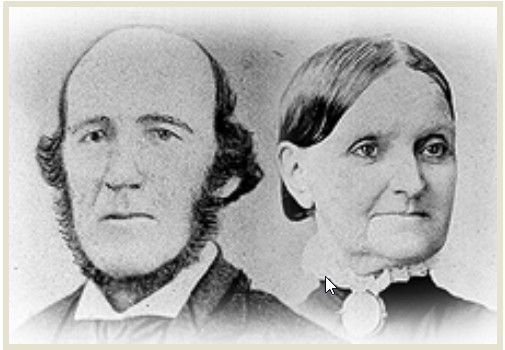Insurance is now an essential part of daily life, but its origins stretch deep into human history. People have always faced risks, and they created ways to share or lessen them together. Over centuries, insurance evolved from simple agreements among ancient traders to the sophisticated digital systems of today. Throughout history, new ideas and technologies have influenced how people manage uncertainties. As society changed, so did the tools people used to protect their futures. Exploring the journey of insurance reveals a story of human cooperation and innovation. Understanding this history helps us appreciate the safety nets we often take for granted. The path from ancient beginnings to modern marvels is both complex and fascinating.
Ancient Beginnings: The Earliest Forms of Insurance
Long before the first insurance companies appeared, early civilizations created methods to share risks. In ancient Babylon, around 1750 BCE, the Code of Hammurabi included rules that protected merchants from financial ruin. If a trader lost his goods during transport, others in the caravan would share the loss equally. This early form of risk pooling meant that no one trader carried the entire burden, which encouraged more people to engage in trade. Therefore, cooperation became the foundation of early insurance, helping communities to thrive.
In ancient China, merchants who shipped goods along rivers faced great dangers. They divided their cargo among many boats to reduce the risk of losing everything in a single accident. As a result, if one boat sank, each merchant lost only a small portion rather than their entire investment. Ancient Greeks and Romans also developed early versions of insurance. Greek benevolent societies, for example, supported families of deceased members, while Romans created burial clubs to cover funeral expenses. These practices illustrate how people naturally sought ways to protect themselves and their loved ones.
Over time, insurance ideas spread and adapted to local needs. People in different regions found creative solutions for their unique risks. Whether the threat was shipwreck, theft, or death, communities agreed to share losses. Through these early efforts, insurance became a vital part of social life. The seeds planted in ancient times eventually grew into the complex financial products we rely on today. Early history shows that insurance is deeply connected to human survival and cooperation.
The Middle Ages: Guilds and Maritime Innovations
During the Middle Ages, insurance began to take on new forms, especially in European society. Guilds, which were powerful associations of craftsmen and merchants, played a significant role in this development. Members of a guild supported each other in times of sickness, death, or disaster. By pooling their resources, guild members could provide financial assistance for families or rebuild after a fire. Consequently, guilds acted as both social networks and early insurers, strengthening communities in uncertain times.
Maritime insurance grew rapidly as European trade expanded in the late medieval period. Italian merchants in cities like Genoa and Venice started to formalize contracts that protected shipowners and cargo. By agreeing to pay a fee, merchants ensured that if their ship was damaged while at sea, they would receive compensation. As international trade brought new risks, these contracts became more detailed and widespread. The first recorded insurance contract, signed in Genoa in 1347, paved the way for modern marine insurance. With each voyage, merchants gained more confidence in exploring distant markets.
Legal frameworks around insurance also advanced during the Middle Ages. Local governments and courts began to recognize and enforce insurance contracts. In England, the practice of using written policies grew more common among traders. As a result, regulators developed regulations to prevent fraud and encourage fair dealing. These changes marked an essential transition from informal agreements to formal, enforceable contracts. The innovations of the Middle Ages created a foundation for the insurance systems that would flourish in the centuries ahead.
The Rise of Modern Insurance in the Industrial Era
The Industrial Era brought dramatic changes to society and the insurance industry. As cities grew and factories appeared, new risks emerged that affected thousands of people. Life in crowded urban areas exposed people to fires, accidents, and illnesses on a much larger scale than before. Insurance companies responded by offering new types of coverage. Fire insurance, for example, became popular in England after the Great Fire of London in 1666. People recognized the value in pooling money to protect against unexpected disasters.
During this period, the first major insurance companies were established. Lloyd’s of London, which began as a coffee house for shipowners and merchants, became a leader in marine insurance. Over time, Lloyd’s developed systems to assess risks and settle claims. Other companies soon followed, offering policies for life, health, and property insurance. Actuaries, or risk experts, used mathematics to set premiums and predict losses. The use of statistics made insurance more reliable and fair for customers.
Regulation and government oversight also increased during the industrial era. Authorities recognized the importance of protecting policyholders from fraud and insolvency. New laws required companies to maintain reserves and report their finances. As a result, public trust in insurance grew stronger. The foundations laid during the Industrial Era allowed insurance to become a stable part of the modern economy. By adapting to new risks and technologies, the industry continued to evolve.
Transformations in the 20th Century and Beyond
The 20th century brought about rapid change in nearly every aspect of life, and insurance was no exception. Advances in medicine and transportation created new risks and opportunities for insurers. Health insurance became widespread as governments and private companies recognized the need to help people pay for medical care. Life insurance, once limited to the wealthy, became accessible to millions of families. Consequently, insurance helped people face uncertainties in an ever-changing world.
The rise of automobiles introduced a new hazard, prompting the creation of auto insurance. As cars became common, governments required drivers to carry insurance for accidents and injuries. The scope of coverage also increased, with policies available for almost every imaginable risk. From homeownership to travel, people found ways to protect their property and well-being. Insurance companies, in turn, developed more sophisticated products and services.
Globalization further transformed the industry, connecting insurers and customers across borders. Reinsurance, which allows companies to share risks with other insurers around the world, became an essential part of the business. Laws and regulations also evolved to keep pace with new challenges. The 20th century proved that insurance could adapt, grow, and remain relevant in an unpredictable world. Through every change, the core idea remained the same: people working together to manage risk.
The Digital Age: Technology’s Impact on Insurance
The digital revolution has reshaped insurance once again, creating new opportunities and challenges. Technology enables insurers to process claims faster and communicate directly with customers online. As a result, people can now purchase and manage policies from their computers or smartphones. Artificial intelligence helps companies assess risks and detect fraud more accurately. Insurers use big data to price policies more fairly and customize coverage for each customer.
Digital platforms have also inspired new business models and insurance products. Peer-to-peer insurance, for example, allows groups of people to pool their risks directly. Insurance is also embedded in many products and services, such as travel booking sites and ride-sharing apps. Customers have come to expect instant service and transparency, which pushes insurers to innovate. Technology improves efficiency, but it also raises new questions about privacy and security.
The digital age has made insurance more accessible than ever before. People around the world can compare rates, read reviews, and buy coverage with just a few clicks. Insurers must continue to balance innovation with trust and reliability. As technology advances, the industry will continue to evolve to meet the needs of modern life. The digital transformation shows that the spirit of cooperation and protection is still at the heart of insurance.
Conclusion
The history of insurance is a story of adaptation and collective effort. Each era brought new risks, but people always found ways to face them together. From ancient traders in Babylon and China to the medieval guilds of Europe, the idea of sharing losses has shaped societies for thousands of years. The Industrial Era introduced science and scale, allowing insurance to protect entire cities and industries. The 20th century’s pace of change pushed insurers to cover more risks and reach more people than ever before. Technology has now made insurance faster, more innovative, and more accessible, but it has not changed the fundamental goal. Insurance exists to help people recover from setbacks and look to the future with confidence. The industry remains built on trust, cooperation, and innovation, just as it was in its earliest days. By understanding its fascinating past, we gain insight into how insurance will continue to evolve. As society and technology move forward, insurance will adapt to meet new challenges. The long journey from ancient agreements to digital policies serves as a testament to human resilience and ingenuity. Ultimately, insurance stands as a lasting pillar of support in an ever-changing world.


